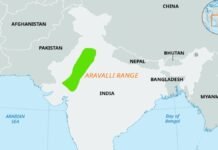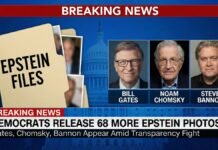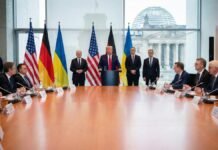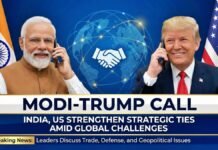
Key Points:
- Ceasefire between India and Pakistan was achieved through direct talks between their Directors General of Military Operations (DGMOs), not via US mediation or trade pressure.
- External Affairs Minister S. Jaishankar has repeatedly and publicly rejected US President Donald Trump’s claims of brokering the ceasefire.
- The ceasefire followed India’s strong military response to a terror attack in Jammu & Kashmir, with Operation Sindoor targeting terror infrastructure in Pakistan.
- India maintains it will not accept any third-party mediation on issues with Pakistan, including Kashmir.
- US officials did contact Indian leadership during the crisis, but had no role in the ceasefire decision, which was initiated by Pakistan’s DGMO.
Washington: External Affairs Minister S. Jaishankar has once again provided a detailed clarification on the circumstances surrounding the recent ceasefire agreement between India and Pakistan, firmly rejecting US President Donald Trump’s repeated assertions of American mediation. Speaking to the media after the Quad foreign ministers’ meeting in Washington, Jaishankar emphasized that the entire record of the ceasefire is public and transparent, and that the agreement was the direct result of mutual talks between the Directors General of Military Operations (DGMOs) of both countries.
Ceasefire Achieved Through Military Channels, Not US Mediation
Jaishankar categorically dismissed claims that the United States, or any other third party, played a role in brokering the ceasefire. He stated, “The record of what happened at that time was very clear and the ceasefire was something which was negotiated between the DGMOs of the two countries…”. He further explained that the decision was taken by mutual agreement, with no linkage to trade negotiations or external diplomatic pressure.
This stance was reiterated in response to President Trump’s public statements, where he claimed credit for stopping a potential nuclear conflict between India and Pakistan by leveraging trade talks and leadership diplomacy. Jaishankar responded sharply, saying, “The US was in the United States,” and stressed that any cessation of hostilities would only be considered if communicated directly by the Pakistani military leadership to their Indian counterparts.
Background: Operation Sindoor and Escalation
The ceasefire came in the wake of heightened tensions following a deadly terror attack in Pahalgam, Jammu & Kashmir, on April 22, which killed 26 civilians. India responded with Operation Sindoor, a series of decisive strikes on terror infrastructure across the Line of Control (LoC) and in Pakistan-occupied Kashmir, demolishing several Pakistani air bases and eliminating high-value terrorist targets. The Indian government made it clear that these actions represented a “new normal” in responding to cross-border terrorism.
How the Ceasefire Was Initiated
According to Indian officials, the turning point came when Pakistan, facing heavy military losses and an untenable situation, initiated contact through its DGMO, requesting a ceasefire. The Indian DGMO responded, and both sides agreed to halt all military operations on land, in the air, and at sea effective from 5 PM on the agreed date. Instructions were immediately issued to implement the understanding, and both militaries agreed to review the situation in subsequent talks.
India’s Position on Third-Party Mediation
India has consistently maintained that it will not accept mediation from any third country on issues concerning Pakistan, including Kashmir. Jaishankar reiterated that “if the Pakistanis want to stop fighting, they need to tell us. We need to hear it from them. Their general has to call up our general and say this. And that is what happened”. He also clarified that during talks between Prime Minister Modi and President Trump, there was no discussion of a trade agreement or any proposal for US mediation on India-Pakistan issues.
On Terrorism and International Responses
Addressing questions about the global response to terrorism, Jaishankar observed that many countries only take the threat seriously when it affects them directly. He called for a more consistent and principled global stance against terrorism, noting India’s own record of responding firmly to such threats.
The recent ceasefire between India and Pakistan stands as a bilateral achievement, rooted in direct military-to-military communication and India’s assertive response to terrorism. Despite external claims, particularly from the US, Indian leadership has made it unequivocally clear that the decision was made independently, on India’s terms, and without any third-party intervention.

















































